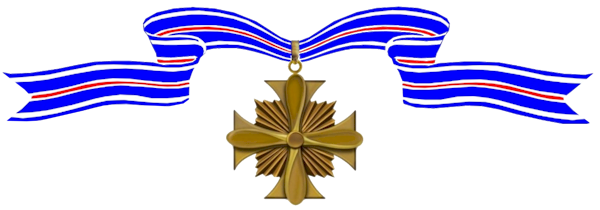Walter Clarke became a World War II Navy ACE, credited with shooting down seven enemy aircraft in aerial combat. He retired as a U.S. Navy Captain in 1969.

–
Born:
,
Home:
,
Awards Received
-

Distinguished Flying Cross
-

Distinguished Flying Cross
-

Distinguished Flying Cross
-

Distinguished Flying Cross
-

Distinguished Flying Cross
-
Distinguished Flying Cross
Service:
United States NavyRank:
Lieutenant CommanderBatallion:
Fighting SquadronAction Date:
World War II
(Citation Needed) – SYNOPSIS: Lieutenant Commander Walter Edward Clarke, United States Navy, was awarded a Gold Star in lieu of a Second Award of the Distinguished Flying Cross for extraordinary achievement while participating in aerial flight as a Fighter Pilot during World War II.
-
Distinguished Flying Cross

Bureau of Naval Personnel Information Bulletin No. 317 (August 1943)The President of the United States of America takes pleasure in presenting the Distinguished Flying Cross to Lieutenant Walter Edward Clarke, United States Navy, for extraordinary achievement while participating in aerial flight on 13 to 14 September 1942, during the Solomon Islands Campaign. While operating with his squadron from an airfield on Guadalcanal, Lieutenant Clarke, with no regard for his own safety, engaged Japanese aircraft and shot down two planes.
-
Distinguished Flying Cross
Service:
United States NavyRank:
Lieutenant CommanderBatallion:
Fighting SquadronAction Date:
World War II
(Citation Needed) – SYNOPSIS: Lieutenant Commander Walter Edward Clarke, United States Navy, was awarded a Fourth Gold Star in lieu of a Fifth Award of the Distinguished Flying Cross for extraordinary achievement while participating in aerial flight as a Fighter Pilot during World War II.
-
Distinguished Flying Cross
Service:
United States NavyRank:
Lieutenant CommanderBatallion:
Fighting SquadronAction Date:
World War II
(Citation Needed) – SYNOPSIS: Lieutenant Commander Walter Edward Clarke, United States Navy, was awarded a Third Gold Star in lieu of a Fourth Award of the Distinguished Flying Cross for extraordinary achievement while participating in aerial flight as a Fighter Pilot during World War II.
-
Distinguished Flying Cross
Service:
United States NavyRank:
Lieutenant CommanderBatallion:
Fighting SquadronAction Date:
World War II
(Citation Needed) – SYNOPSIS: Lieutenant Commander Walter Edward Clarke, United States Navy, was awarded a Second Gold Star in lieu of a Third Award of the Distinguished Flying Cross for extraordinary achievement while participating in aerial flight as a Fighter Pilot during World War II.

